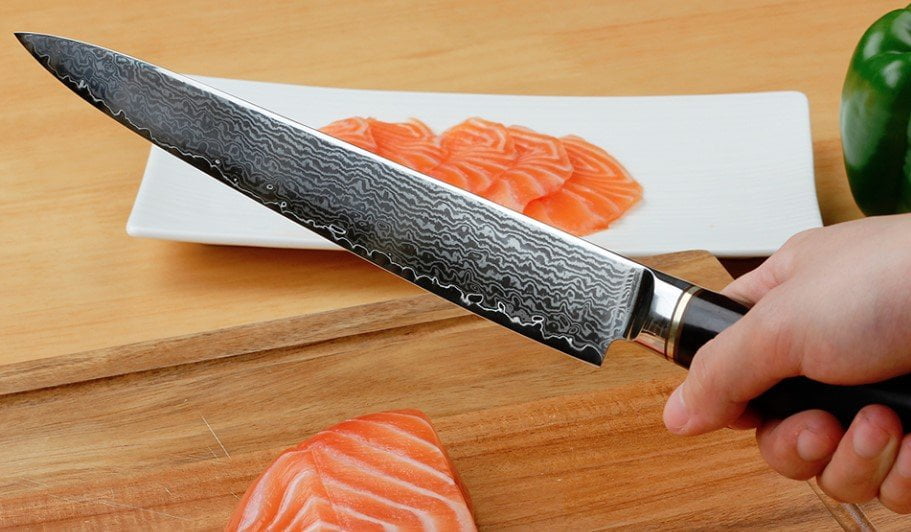The 67 layer Damascus knife has captured the attention of culinary professionals, offering a blend of aesthetic appeal and functional excellence.

The Allure of Damascus Steel
Damascus steel is admired for its unique patterns etched into the blade. This technique, which stems from ancient practices, creates a blade that's as visually appealing as it is effective. The characteristic swirling patterns are not just for show; they play a crucial role in the knife's performance. In the culinary world, particularly for those serious about their craft, having a knife that not only performs well but also reflects elegance is paramount.
Why 67 Layers?
When we discuss a 67 layer Damascus knife, we're referring to the intricate layering of steel that forms the blade. The layering process results in a knife that's incredibly strong, flexible, and sharp. For professionals who require precision, this ensures that every cut is clean and exact. The multiple layers contribute to the blade's strength, reducing the likelihood of chipping while maintaining sharpness over extended use.
Integrating Beauty with Functionality
The beauty of a 67-layer blade does not compromise its function. On the contrary, the pattern contributes to reducing friction, allowing chefs to cut through ingredients with ease. The balance between beauty and function makes Damascus knives a favorite among professional chefs. A knife that holds its edge well translates to less frequent sharpening, retaining the knife's cutting efficiency longer than conventional blades.
Read more on the differences between Hand-Forging vs. Machine-Made Damascus to understand the craftsmanship behind each blade.
Choosing the Right Damascus Knife
When selecting a Damascus knife, particularly for professional kitchen work, considering the layer count and craftsmanship behind it can affect performance. Chefs should evaluate how the knife feels in hand, its balance, and sharpness. Moreover, understanding the knife's keel, the middle ridge where the patterns flow down the blade, is crucial for ensuring a comfortable and precise cutting action.
For those interested in the history of these remarkable blades, The History of Damascus Steel lends fascinating insights into their origins and cultural significance.
Caring for Your Damascus Knife
To maintain your Damascus knife, it is essential to understand the care it requires. Regular cleaning with warm water and a gentle detergent, careful drying after each use, and occasional oiling will keep your knife in prime condition. It's also advisable to use a soft sharpening stone when honing the blade to preserve its unique pattern.
Delve into the nuances of Damascus by understanding the benefits of a Carbon Steel Damascus Knife, and why it's preferred.

Conclusion
For kitchen professionals, a 67 layer Damascus knife represents more than an everyday toolit embodies artistry and precision. By investing in such a high-quality knife, chefs ensure they are equipped with a reliable companion in the kitchen, one that brings both joy and innovation to the culinary process.
FAQs
What makes a Damascus knife different?
Damascus knives are known for their strength, durability, and intricate designs resulting from the unique layering and forging techniques used to create them.
Why should I invest in a 67 layer Damascus knife?
A 67 layer Damascus knife offers superior edge retention, enhanced cutting abilities, and the aesthetic appeal necessary for any professional chef.
How often should I sharpen my Damascus knife?
While these knives retain their edge longer, professional sharpening is typically recommended every 6-12 months, depending on usage frequency.
This article contains affiliate links. We may earn a commission at no extra cost to you.


























